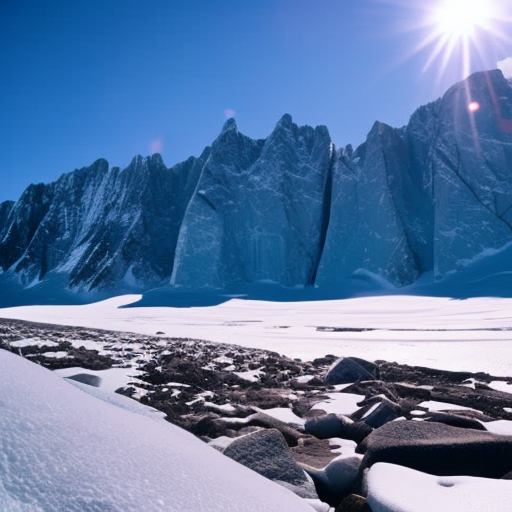Summary:
Glaciology is the scientific study of glaciers, ice sheets, and ice caps. It involves understanding the formation, movement, and properties of ice, as well as the impact of glaciers on the Earth’s climate and landscape. Glaciologists use a variety of techniques, including remote sensing, field observations, and computer modeling, to study glaciers and their behavior. Their research contributes to our understanding of past climate change, predictions of future sea-level rise, and the management of water resources in glacierized regions.
Introduction:
Glaciology is a multidisciplinary field that combines elements of geology, physics, and climatology to study the behavior and characteristics of glaciers. Glaciers are large bodies of ice that form on land and are constantly moving under the influence of gravity. They play a crucial role in shaping the Earth’s landscape and climate.
Formation and Movement of Glaciers:
Glaciers form when snow accumulates and compacts over time, transforming into ice. This process occurs in regions where the amount of snowfall exceeds the amount of snowmelt. As more snow accumulates, the weight of the overlying snow compresses the lower layers, causing them to recrystallize into ice. Over time, the ice becomes denser and begins to flow downhill due to gravity.
Glaciers move through a combination of internal deformation and basal sliding. Internal deformation occurs when the ice deforms under its own weight, causing it to flow like a viscous fluid. Basal sliding, on the other hand, involves the sliding of the glacier over its underlying bedrock or sediment due to the presence of meltwater at the glacier’s base.
Glacier Properties:
Glaciologists study various properties of glaciers to understand their behavior. One important property is the glacier’s mass balance, which refers to the difference between the amount of snowfall and the amount of ice melt. Positive mass balance occurs when a glacier gains more ice than it loses, leading to growth, while negative mass balance results in glacier retreat.
Another property of interest is glacier velocity, which can be measured using GPS or satellite imagery. The velocity of a glacier varies depending on factors such as slope, temperature, and the presence of meltwater. By studying glacier velocity, scientists can gain insights into the dynamics of glacier flow and predict future changes.
Glacier Monitoring and Research Techniques:
Glaciologists employ various techniques to monitor and study glaciers. Remote sensing, using satellites and aircraft, allows scientists to collect data on glacier extent, surface elevation, and ice velocity over large areas. This data is crucial for understanding the overall behavior of glaciers and detecting changes over time.
Field observations involve direct measurements and sampling on the glacier surface. Scientists use instruments such as ground-penetrating radar to study the internal structure of glaciers and measure ice thickness. They also collect ice cores, which provide valuable information about past climate conditions and atmospheric composition.
Computer modeling plays a significant role in glaciology. Models simulate the behavior of glaciers based on physical principles and input data, allowing scientists to make predictions about future changes. These models are used to study the impact of climate change on glaciers, project future sea-level rise, and assess the availability of water resources in glacierized regions.
Glaciers and Climate Change:
Glaciers are sensitive indicators of climate change. They respond to changes in temperature and precipitation patterns, making them valuable for studying past climate variations. By analyzing ice cores and other glacial records, scientists can reconstruct past climate conditions and understand the causes of natural climate variability.
The retreat of glaciers observed in many parts of the world is largely attributed to global warming. As temperatures rise, glaciers melt at a faster rate than they can accumulate new ice, leading to a net loss of ice mass. This contributes to sea-level rise and affects water availability in regions that rely on glacier meltwater for irrigation and drinking water.
Conclusion:
Glaciology is a vital field of study that helps us understand the behavior of glaciers and their role in the Earth’s climate system. By combining field observations, remote sensing, and computer modeling, glaciologists contribute to our knowledge of past climate change, predictions of future sea-level rise, and the management of water resources in glacierized regions. Their research is crucial for informing policies and actions to mitigate the impacts of climate change.












